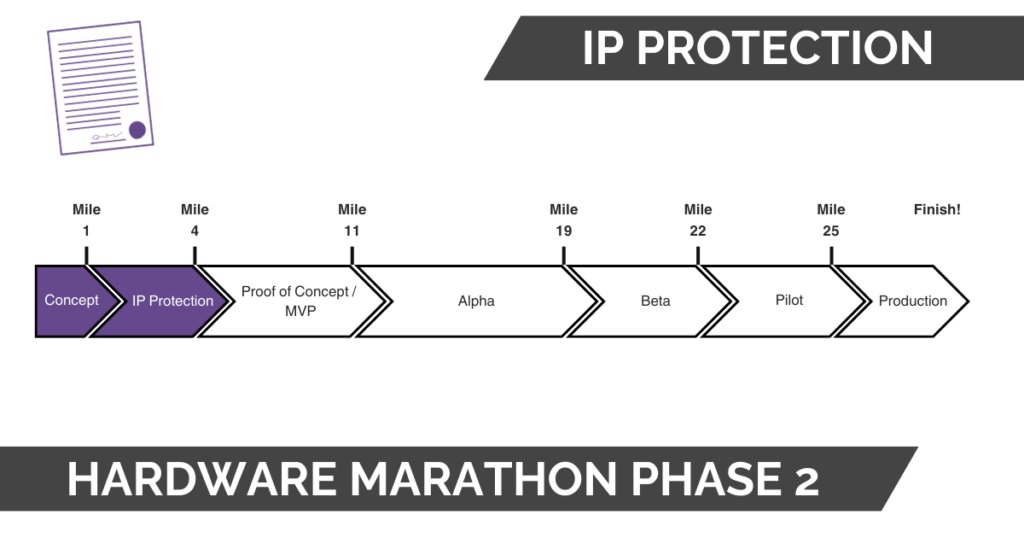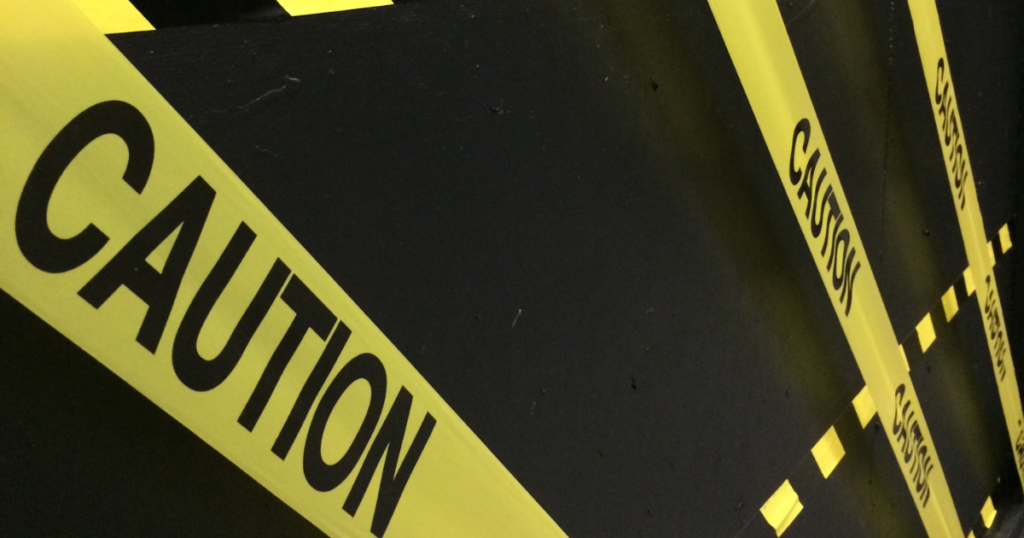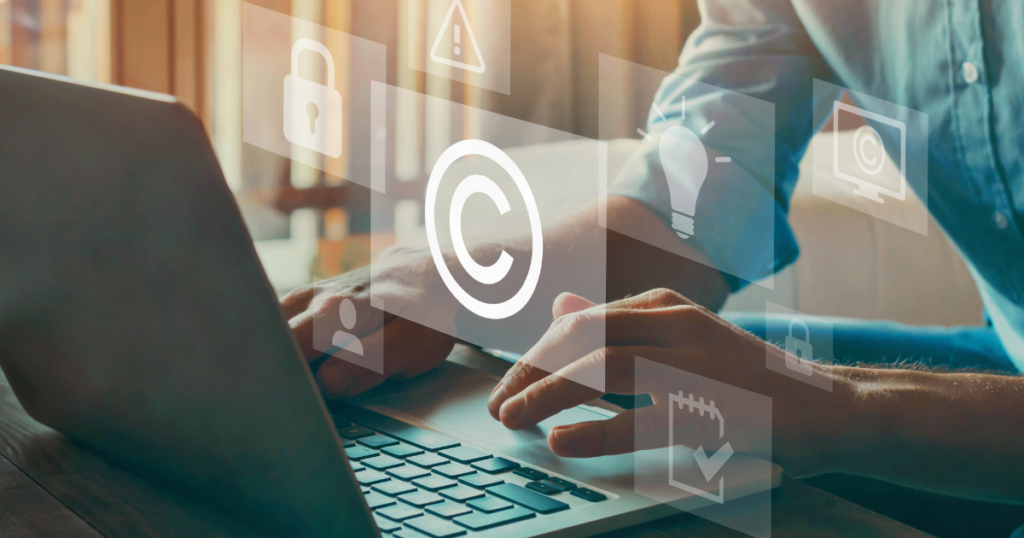Hardware Marathon: Installment 3
This post is the third in the series, “The Hardware Marathon.” In this series, I discuss the process involved in developing a hardware product from concept to production.
When we last left our runner, the first mile was completed. The marathon is off to a good start and it’s even been fun. The body is relaxed and settled into a moderate pace while the initial excited energy is beginning to calm down looking ahead to the many miles left to the finish line. After a quick time check, the cheer of the spectators push our runner forward.

On the hardware marathon front, your concept is built and you’ve enjoyed exploring the different features of your product. You have a pretty good idea of the basic theory and function of the design. During this early phase there are some critical actions you can take that help or hinder your ability to protect your idea.
In this blog we’ll take a brief look at the patent process and some key elements to consider.
CAUTION AHEAD: Public Disclosure
One of the first pitfalls in the product development marathon is early public disclosure. In your excitement about your idea, you may share it with others. Or as you are working through the Concept you may need to get user input.

In either case, it is important to understand your risk of public disclosure and how this could hinder your ability to secure a patent.
Public disclosure is a non-confidential conveying of information pertaining to your invention through documents, activities, or conversations.
Giving out too much information can result in limiting or hurting your patent filing and you need to be aware of the timeframe for filing a patent. One way to avoid a public disclosure is to have people sign a Non-Disclosure Agreement (NDA) before providing any confidential details or what you would define as your intellectual property.

FIRST STEPS: Patent Overview
There are several ways to protect your idea: trade secrets, patents, or just limiting the details of information you share with people. It’s important to understand if your product would benefit from a patent or other ways you can protect your intellectual property (IP).If you decide that your product needs a patent, first determine what type you need: a design or utility patent. Utility patents account for roughly 90% of patents issued by the United States Patent and Trademark Office (USPTO) in recent years.
Design Patent – appropriate for an original and ornamental design applied to a manufactured product.
Utility Patent – used for a new and useful process, machine, manufacture, or a useful improvement to an existing product.
Once you’ve determined the type of patent is appropriate, the next step is to complete a patent application. However, before completing your application, it is wise to search the USPTO website for any existing patent that would cover your idea. Make use of keywords that describe your product. NOTE: The USPTO will only publish information about awarded patents, not provisional patents that are pending a decision.

MILESTONE: The Provisional Patent Application
Up to this point, the steps are reasonable to complete on your own, but you may save time and ensure a comprehensive search by hiring a patent agent or attorney. Many people choose to file a provisional patent on their own through the USPTO if their search doesn’t reveal anything already covered by a patent. The basic fee for a micro entity to file a provisional patent is $64 in 2023. The process is electronic, unless you pay more for a paper filing.
“The provisional (patent) provides a stake in the sand; it holds your place in the line. When you file the patent within a year, and that matter was disclosed, anything that is captured in the provisional allows you to have the early filing date. The provisional reaches back in time to say, ‘This is when I was filed.’ This is really important in the market spaces with products that are fast-moving,” said Registered Patent Agent at Voz Patents Dave Eyvazzadeh.
After you submit your application, you’ll probably hear back from the USPTO in 1-3 months. Over the next year you will need to apply for the corresponding non-provisional patent in the United States; both applications are part of the same process. It’s a good idea to rely on someone trained to prepare a non-provisional patent due to the complexity of the legal documents. If you don’t protect enough of your design, you leave the door open for competitors and those looking for legal loopholes to utilize your idea.
“You want to own a certain space. I use the analogy of a sandbox. What you’re trying to do is get the biggest sandbox possible, and what defines that sandbox isn’t the description and images—what you actually own are the claims. It is those claims in the non-provisional (patent) that are assessed for patentability,” said Eyvazzadeh.
While we have primarily looked at some of the aspects of filing a patent, not every product is patentable or needs a patent. Regardless of the path you chose to protect your IP, it is worth taking the necessary steps to protect your company’s future.
The Road Ahead
Our runner has completed the first 3 miles of the marathon. The unexpected variables of weather, the course, and the competition are better understood. There is a feeling of confidence in the training and preparations for the unexpected challenges that lie ahead. Still full of energy and mental stamina to reach the finish line in the distance, our runner takes a deep breath and slightly picks up the pace as the 4th mile begins.
Stay tuned for the next blog for how to confirm the theory behind the idea. You will continue to leverage iterations as you create a proof of concept, build prototypes and get feedback on a Minimum Viable Product (MVP).
